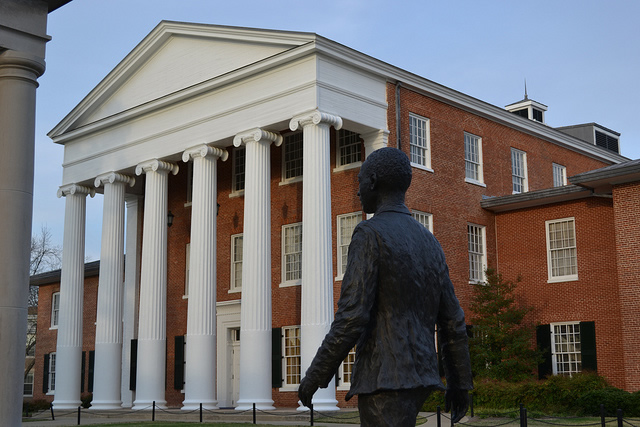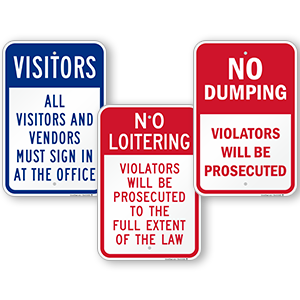Signs at center of efforts to reduce controversy at Ole Miss
The University of Mississippi, commonly known as Ole Miss, boasts one of the most storied traditions in all of college sports. It’s a beacon of athletic success and the flagship institution of a state that faces more than its share of challenges. Mississippi routinely lands on the bottom of lists ranking states on indicators of socioeconomic viability and health, but Ole Miss is a source of pride.
There’s just one problem: Many of those Ole Miss’s traditions elicit discomfort for more than a few people. The institution’s culture and history is inextricably linked with Confederacy and all the segregationist associations that come with it.

Adding informative signs to historical sites may make Ole Miss more attractive to black students. From J R Gordon.
Sandra Knispel of National Public Radio’s show “All Things Considered” took a close look at Ole Miss’s internal struggle between tradition and controversy.
As Knispel observes, the school’s Confederate legacy is pervasive, and a sign is at the forefront of the movement to reform its image. A main road through campus was named Confederate Drive. “Obviously the name Confederate Drive can be seen as divisive by some people and could be seen as an effort by the university to embrace an ancient idea,” university spokesman Danny Blanton told NPR.
Some have blamed such perceptions for the school’s disproportionately low enrollment of students of color. Though the state’s overall black population is “nearly 40 percent,” black students make up only 14 percent of the University of Mississippi’s enrollment.
“Many black families remain hesitant about sending their children [to the University of Mississippi],” reports Knispel.
And that hesitation is derived from more than just a street name. In February of this year, three students hung a noose around the neck of a statue on campus. The statue represented James Meredith, the first African American to attend the University of Mississippi.
The University of Mississippi is taking action to address lingering elements of the state’s segregationist history, but they are having to do so delicately, because so many of those elements are deeply rooted in the school’s traditions—and, thus, their source of pride.
They officially changed the name of Confederate Drive to Chapel Lane. The response? Some approved, and some didn’t. An ultraconservative history group called the Mississippi Division of Sons of Confederate Veterans, sued the University of Mississippi over the name change.
Knispel quotes a student who said, “I’m all about tradition and I think it should remain Confederate Drive. It’s just part of the history of the South.”
The school created a Center for Inclusion and Cross-Cultural Engagement. The school’s first black homecoming queen, Courtney Pearson, now serves as a graduate assistant at the Center. Pearson addressed the noose incident, stating that she appreciates that: “We didn’t allow the action of three students to take three steps back. We’re still moving forward.”
The school also plans to use signs to further their cause in the future: they’ll erect signs with historical context at controversial sites, like a statue of the Confederate soldier in the middle of the university’s campus.
Knispel notes that one tradition that the school won’t touch is the Ole Miss nickname. It’s splashed across sweatshirts, banners, and nearly every piece of school paraphernalia. University chancellor Dan Jones defends the nickname as generally viewed as a ‘term of endearment.’
No word on whether or not the “Rebels” sports name is being formally challenged.









